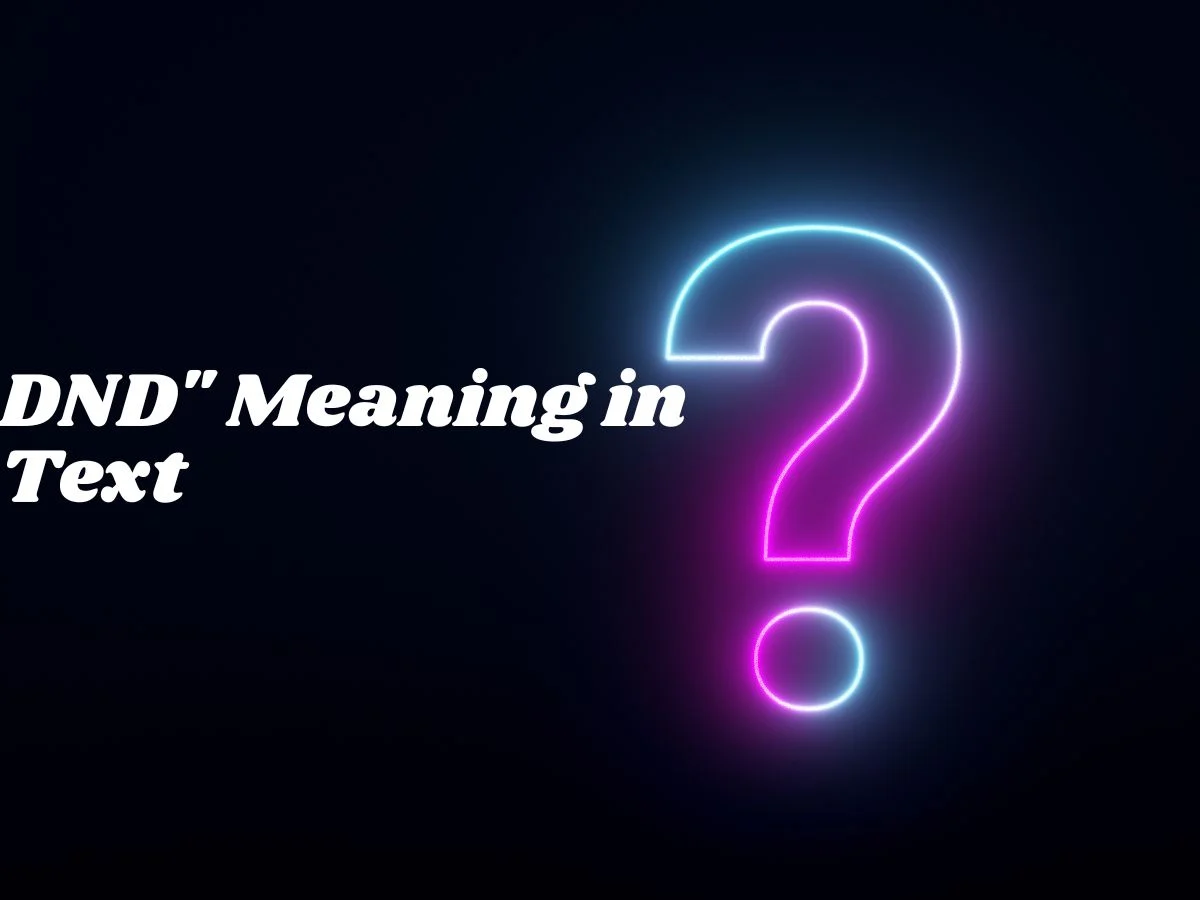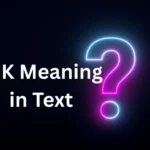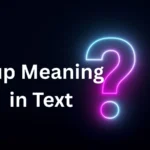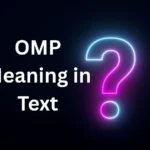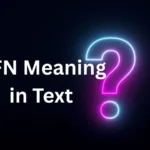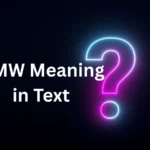In the fast-paced world of digital communication, acronyms and shorthand terms are crucial for quick and efficient exchanges.
One such acronym that frequently appears in texting, messaging apps, and social media is DND.
But what exactly does “DND” mean, and why is it important to understand its usage? Whether you’re a casual texter, a professional navigating workplace chats, or a pop culture enthusiast, knowing the meaning and context of “DND” can help avoid misunderstandings and improve communication.
This article dives deep into the meaning, origins, common uses, and variations of DND to give you a comprehensive understanding of this popular acronym.
Definitions & Meaning
“DND” stands for Do Not Disturb. It is primarily used to signal that someone does not want to be interrupted or contacted at a particular moment.
In texting or instant messaging, sending “DND” indicates that the person is busy, unavailable, or wishes to focus without distractions.
This abbreviation is widely understood across various platforms, including smartphones, messaging apps like WhatsApp or Slack, and even email.
The phrase “Do Not Disturb” itself has a straightforward meaning: requesting silence or privacy. In digital communication, it often functions as a polite boundary setter, helping people manage their availability.
Example:
- Friend 1: “Hey, want to chat?”
- Friend 2: “Sorry, DND for a bit, working on a deadline.”
In this example, Friend 2 politely informs Friend 1 that they are currently unavailable.
Origins & History
The concept of “Do Not Disturb” predates the internet era. Traditionally, it was most famously used on hotel room signs to indicate a guest’s desire for privacy and no interruptions.
The sign “Do Not Disturb” hanging on a door has been a standard for decades, symbolizing the need for peace and quiet.
With the advent of mobile phones, computers, and instant messaging, this phrase transitioned into digital use.
Early mobile phones included a “Do Not Disturb” mode to silence calls and notifications.
As texting and chat apps became mainstream, users started abbreviating the phrase to DND to quickly convey the same message in conversations.
Today, “DND” is a common feature and term in software and hardware settings, allowing users to mute alerts and focus.
The acronym’s digital popularity is largely due to its brevity and clear meaning, making it perfect for fast communication.
Usage in Different Contexts
Social Media and Texting
On platforms like Twitter, Instagram, and everyday texting, “DND” is a quick way to let others know you’re temporarily unavailable.
It’s informal but universally understood, often used in group chats or direct messages.
Professional Environment
In work settings, especially in remote or hybrid workplaces, “DND” is used to signal busy hours or focus times.
Many professional tools like Microsoft Teams, Slack, and Zoom have built-in DND statuses that notify colleagues not to disturb the user.
Example:
- Colleague 1: “Can you join the meeting now?”
- Colleague 2: “DND till 3 PM, finishing a report.”
This shows a respectful way to communicate boundaries at work.
Pop Culture and Gaming
In gaming communities, “DND” can also refer to Dungeons & Dragons, a popular tabletop role-playing game.
This alternative meaning can sometimes cause confusion depending on the context.
Example:
- “Are you playing DND tonight?” (referring to the game) vs.
- “I’m on DND mode, please don’t message me.” (referring to Do Not Disturb)
Context helps differentiate these meanings.
Common Misunderstandings & Clarifications
A frequent misunderstanding arises from the dual meaning of DND—either “Do Not Disturb” or “Dungeons & Dragons.” Without context, the acronym can confuse newcomers.
Another point of confusion is when people use DND to imply they won’t respond at all, which might come off as rude if not explained properly.
DND generally means temporary unavailability, not permanent silence.
People sometimes mistake DND for being “offline” or “inactive,” but it specifically means not to be disturbed and may still involve presence or attention to certain activities.
Alternatives & Synonyms
There are various ways to express the concept of DND, depending on the formality and medium:
- Busy
- Unavailable
- Silent mode
- In a meeting
- Focus mode
- Muted
- Away (common in chat statuses)
For professional communication, phrases like “Currently occupied,” or “Please do not disturb” are polite alternatives.
In casual texting, people might say “BRB” (Be Right Back) or “TTYL” (Talk To You Later) when temporarily unavailable.
Frequently Asked Questions (FAQ)
Q1: What does DND mean on my phone?
A1: It usually refers to “Do Not Disturb” mode, which silences calls, messages, and notifications so you can focus without interruptions.
Q2: Can DND be used in professional emails or messages?
A2: Yes, but it’s better to use the full phrase “Do Not Disturb” or explain your availability for clarity.
Q3: Is DND the same as offline?
A3: No, offline means not connected to the internet, while DND means connected but unavailable for interruptions.
Q4: Why do people use DND in group chats?
A4: To politely let others know they cannot reply or participate at that time.
Q5: How do I set DND mode on my device?
A5: Most smartphones and computers have a Do Not Disturb option in settings that can be toggled on/off or scheduled.
Q6: Can DND be used in gaming?
A6: Yes, but it might refer to the game “Dungeons & Dragons” or simply the Do Not Disturb status, depending on context.
Q7: Are there emojis related to DND?
A7: Yes, common ones include 🚫, 🔕, or 🛑 to symbolize do not disturb or silence.
Conclusion
Understanding the meaning of DND is essential in today’s digital communication landscape.
Whether you encounter it in texting, professional settings, or pop culture, knowing it stands for “Do Not Disturb” helps you respect boundaries and manage interruptions effectively.
Its roots trace back to physical signs, evolving into a critical feature on devices and platforms worldwide.
Awareness of its alternative meanings and common misunderstandings can prevent confusion, making your communication smoother and more considerate.
Next time you see “DND” in a message or status, you’ll know exactly what it means—and when to respect it.
